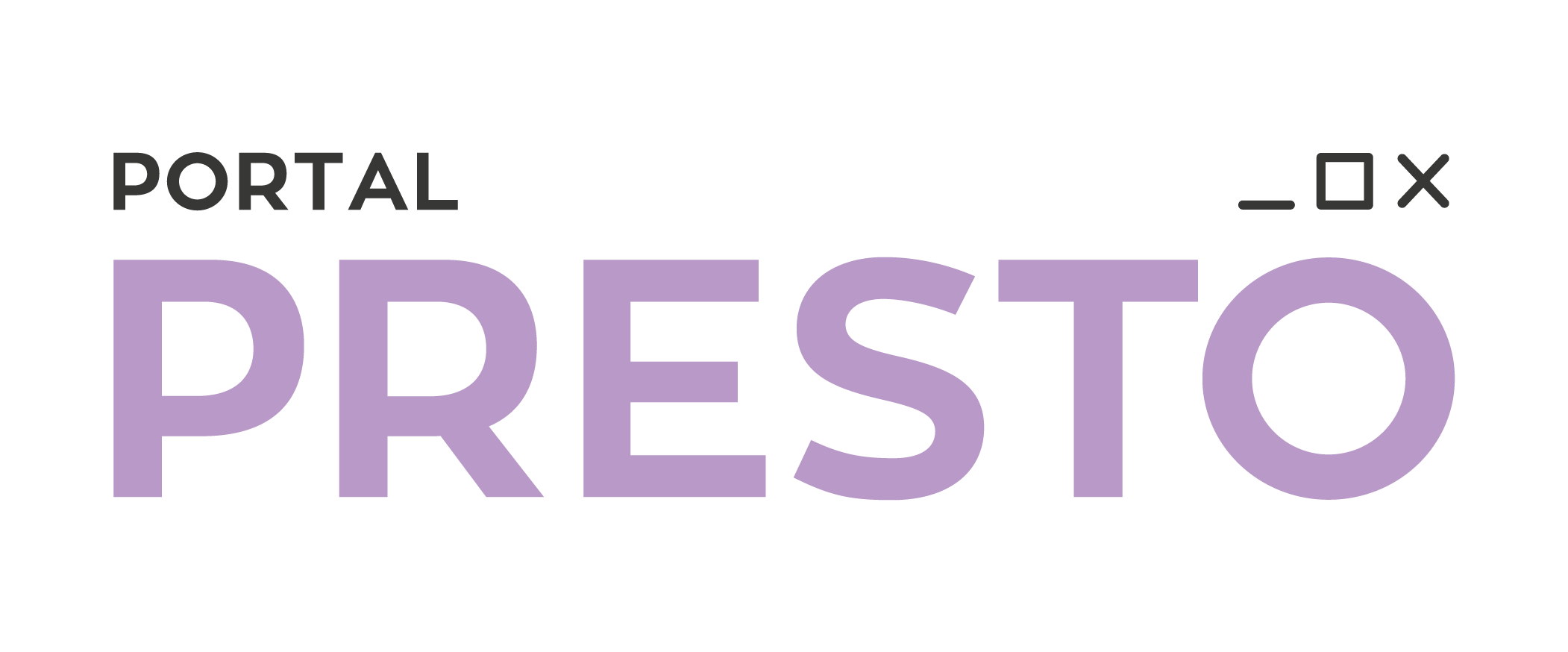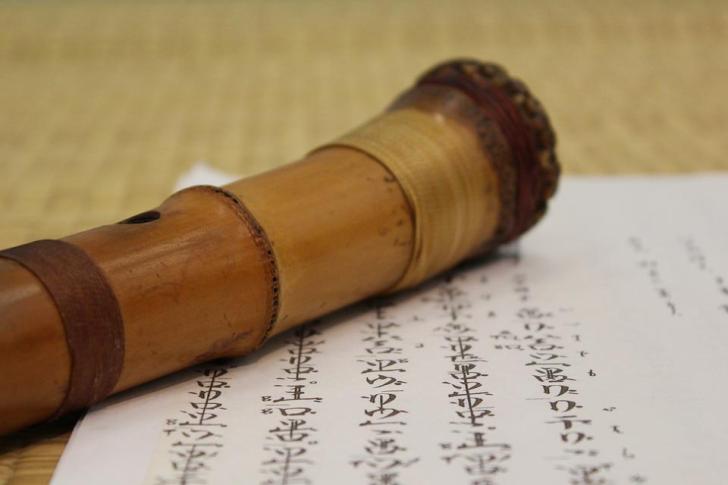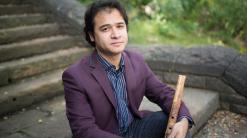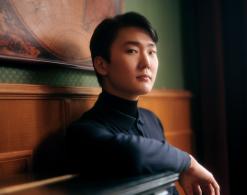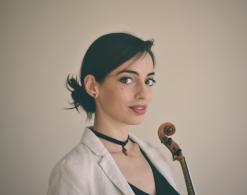Devon Osamu Tipp: By playing shakuhachi I learn about myself
About the history of the shakuhachi flute, Japanese traditional music and a concert with the Warsaw Gamelan Group – Agnieszka Cieślak-Krupa talks with the American composer and performer Devon Osamu Tipp.
Agnieszka Cieślak-Krupa: It was great having you in Warsaw in March! I hope you have good memories of your first visit to Poland and that you managed to try most of the traditional Polish food. As the shakuhachi flute is not well known in our country, please tell us at the beginning a few words about this instrument. When and why did you decide to learn shakuhachi?
Devon Osamu Tipp: Thanks for having me here in Warsaw – I had a great time experiencing the city and trying some traditional food. I can never have enough barszcz! (laughs) But we are here to talk about music today I guess… The shakuhachi 尺八 is a Japanese five holed end blown bamboo flute. I first encountered the shakuhachi from a famous recording in the late 90’s called “The Soloists of Ensemble Nipponia”. Originally released by Nonesuch Records in 1976, it features several different traditional pieces for different Japanese instruments and one piece by Miki MINORU 三木稔. The piece that stuck out to me the most was Kōhachiro MIYATA 宮田耕八郎 playing Kumoi Jishi 雲井獅子, a traditional solo shakuhachi piece. I was struck by sound of the instrument – I had never heard anything like it! And the melody was stuck in my head for a long time after I first heard that CD, however, I wouldn’t have a chance to play the instrument, let alone see a shakuhachi in person until some 12 or so years later when the composer, flutist, thereminist, and shakuhachi player Elizabeth Brown started teaching at my alma mater, Monclair State University in 2014. She started a shakuhachi class there, and I eventually started taking lessons (first composition, and then later shakuhachi) as a means of developing a hands-on relationship with my own Japanese heritage. Additionally, as a composer, I found the sound and the pacing of the traditional music, particularly the solo honkyoku 本曲 (translate, original music) repertoire was very compelling.
Can you tell us a little bit more about the origins and history of this instrument? Today, is it popular mainly in Japan or also elsewhere?
The shakuhachi first arrived in Japan sometime during the 7th or 8th century as a part of the gagaku 雅楽 (translate, elegant music) court orchestra, which is considered one of the oldest types of orchestral music in the world and is designated as an Intangible Cultural Heritage tradition by UNESCO. The shakuhachi that was part of the gagaku orchestra however was shorter than most instruments that people play today, had six tone holes instead of five, and had a narrower bore. There are eight of these types of proto-shakuhachi housed in the Shōsōin Repository 正倉院 at Tōdaiji Temple 東大寺 in Nara, Japan. However, the shakuhachi as we know it today, and the repertoire that many of us in the Kinko 琴古 style of playing learn and most often perform was developed during Japan’s Edō Period (1603-1868).
The shakuhachi has its roots in the solo repertoire of the mendicant monks of the now bygone Fuké-shū 普化宗branch of esoteric Buddhism. Around the same time, it was also present in sōkyoku-jiuta 箏曲地歌 sankyoku 三曲music. These two genres are essentially chamber music for a combination of shamisen(s) 三味線 koto(s) 琴, kokyū 胡弓 (3 string bowed spike fiddle), and voice. The kokyū was eventually replaced by the shakuhachi, however it did not die out entirely and is still performed to this day in sankyoku performances. While sankyoku implies the presence of three performers, these pieces can be performed as solos, duos, or trios, giving them some flexibility in terms of how they can be performed. So, shakuhachi has essentially had a role in both solo and ensemble pieces since the 19th century, and maybe as early as the late 18th century. Some of the honkyoku like Kumoi Jishi 雲井獅子, Azuma no Kyoku 吾妻の曲, and Shika no Tōne 鹿の遠音 exist both as solo works and as duos.
However, in the 20th century the shakuhachi starts to appear in many kinds of ensembles, though of course this was not something that happened over night. Some important examples of the shakuhachi leaving the exclusive realm of traditional Japanese music can be heard in the Verve record Music for Zen Meditation (1964) with Tony Scott (1921-2007), the Late Living National Treasure Hōzan Yamamoto 山本邦山 (1937-2014), and Shin’ichi Yuize 唯是 震一 (1923-). Three years later, the New York Philharmonic would commission Tōru Takemitsu武満徹 (1930-1996) to write his landmark double concerto November Steps (1967) for shakuhachi (played by Katsuya Yokoyama 横山勝也 (1934-2010)) biwa (pear shaped lute, played by Kinshi Tsuruta 鶴田錦史 (1911-1995)) and symphony orchestra.
By the early 70’s, composers in Japan such as Motohiko Adachi 安達元彦, Toshi Ichiyanagi 一柳慧, and Ryōhei Hirose 廣瀬量平 were writing works for large ensembles of mixed Japanese instruments that included koto, shamisen, shakuhachi, and others. I’m not sure when the first work for Japanese instruments alongside Western instruments was written (I don’t think it’s November Steps, maybe as early as post World War I), but it is becoming increasingly common. Hozan Yamamoto did no shortage arranging and performing jazz compositions, and even has an LP that is all bossa-nova covers. He also played on some LPs of Bach arrangements – his output of works and recordings is quite extensive.
I would say starting in the 70’s and 80’s the shakuhachi became quite popular in the US. There is now a European Shakuhachi Society, the International Shakuhachi Festival Prague, the Shakuhachi Summer Camp of the Rockies in Colorado, and others. The shakuhachi has also become tremendously popular in China. For more information on that, I would recommend the 2019 documentary called Shakuhachi: One Sound, One Life 尺八・一音イ一世.
In comparison to other types of flutes, is it a tough instrument to learn? How long did it take you to master basic techniques of playing and who were your teachers?
I would argue that all instruments are hard and that each instrument has its own idiosyncrasies or challenges. However, despite that, yes, I would say that shakuhachi is a challenging instrument and I think it is safer to say I’ve reached a point where I can play the instrument publicly in concerts. I have been studying primarily with Ralph Samuelson and Elizabeth Brown, both New York based shakuhachi players. I think it took me well over two years to consistently produce a sound, and I am still learning how to properly move my head and fingers when playing! (laughs) You see, shakuhachi players do not typically use their tongue to start the sound, and we produce vibrato with our heads, not our abdomen like on most Western woodwind instruments, so that is why I say I am still learning how to move my head.
I don’t think that the shakuhachi is an instrument you ever master. Sure, there are titles of dai shihan 大師範 (translate, master, grand master) but this really isn’t the core of what playing the shakuhachi is about, at least for me. Every time I pick up my instrument it feels slightly different to me – I instead rather want to have a conversation with it. Through studying the traditional music, as well as the contemporary music, I can learn more about myself and sometimes even some small aspect of my Japanese roots, albeit one that is 300 years in the past... If you approach playing an instrument from the point of view of mastery, accomplishing this type of relationship with music making becomes more challenging, as the goal doesn’t line up quite as well with the goals of self-discovery.

This kind of motivation is clearly visible during your concerts, they are a great pleasure to listen to. I would like to ask, out of curiosity, how many instruments do you have and where can you buy a shakuhachi today – are they exclusively made in Japan?
Some players own many different length flutes, while some others don’t, however I think it’s common for professional shakuhachi players to own a few of different lengths. The flute I think that is most played is referred to as a 1.8 shakuhachi. The “1” refers to the word shaku尺, a unit of measurement equivalent to approximately 30.3cm. The “8”, or hachi 八, refers to another unit of measurement, sun 寸 approximately 3cm, so the name of the instrument shakuhachi is actually just units of length. If you add sun/shaku to the flute, it becomes longer and higher if you subtract. So, there are shakuhachi as short as 1.1, or as long as 3.1. I currently own a 1.6, 1.7, 1.8, 1.9, and 2.1. One of the reasons we have different length flutes is to accommodate singers in traditional chamber music performance – for example if the tessitura of a piece is a little too high for a singer, we can use a slightly longer flute and then the shift in registration makes it easier to sing. Certain contemporary compositions are written for specific length flutes, while other times a performer may simply prefer playing a piece on a different length flute.
Shakuhachi are made all over the world these days, not just Japan. There are many prolific makers of the instrument in the US like Perry Yung and Monty Levenson and I think there are some in Europe as well. I also want to add that there is a lot of free and easy to access information about shakuhachi available on komuso.com which includes a long list of shakuhachi players, information about pieces, instrument makers around the world, as well as a list of teachers organized by location.
It looks like we have another niche to fill in Poland. (laughs) In addition to being a talented performer, you are also a prolific composer of unorthodox music. Do you write a lot of music for shakuhachi? Is it more of a solo instrument or is it also popular in chamber music?
I have been writing semi regularly for shakuhachi since 2016, however I still find writing solo music for it challenging. I find most of the traditional solo repertoire to be so compelling that I try not to write for shakuhachi; I’m just not sure what I can offer in that kind of domain. I prefer writing for groups of shakuhachi, or when it is part of an ensemble, or in combination with electronics. But the traditional repertoire is more interesting than anything I have to say without electronics or as a part of an ensemble. At the beginning of 2021, I started improvising with live processed electronics, and I have found this to be a very natural extension of my regular conversations with my shakuhachi. So far in 2022, all the music I have written so far has been for Western instruments, but almost all that music had some portions of it tried out on shakuhachi.
It is not an exaggeration to say shakuhachi changed my relationship to composing. Back in 2018 I wrote a piece for Elizabeth Brown called Pale Blue Dot for shakuhachi and tape. Every sound you hear in the tape track was played by me and then processed and changed in Ableton. I then tried to write music that made sense for the types of compositions that Elizabeth likes to play. I think it was some two months earlier Elizabeth had performed my 2016 Self Portrait for shakuhachi, prepared string trio, and piano but that piece was written for Adam Robinson, another fine shakuhachi player and close friend of mine (also a Ralph Samuelson student). It was around this time that I was struck by how much the personality of the performer affected the way in which I wrote a piece. I would say that from these two experiences, I really started learning what it means to collaborate. Since 2019, I have increasingly tried to play anything I write at an instrument. I still have my bassoon, so I use that sometimes, but rarely in public performance, a western concert flute, and a clarinet which allows me to explore many kinds of sounds and thus have better more meaningful discussions about how to write for new performers. But I think I most often find myself experimenting on shakuhachi and wondering if certain things I do on it can translate to other instruments, not just woodwinds and brass but string instruments as well. The results so far have been very interesting and while it is not always a direct translation, the process has been immensely rewarding.
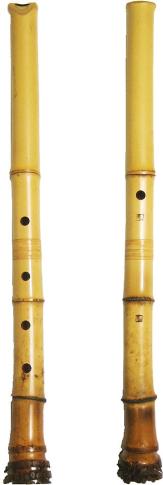
In Warsaw you performed with the Warsaw Gamelan Group. Was it hard to come up with the program that combines these two musical worlds, Japan and Indonesia? Were there any specific pieces that you wanted to introduce the Warsaw audience to?
The concert program was designed around Elizabeth Brown’s 2010 Cloudrest for gamelan, voice, and shakuhachi. It is not the only work that uses this kind of instrumentation, but it is unique. One of the reasons I think the piece is so effective is that it incorporates elements of both traditional Indonesian and Japanese music. For example, gestures in the shakuhachi melodic line are sometimes borrowed from honkyoku music or altered somehow to make them feel slightly different and therefore has an exciting new energy to it. Additionally, patterns played by the gamelan ensemble are like what you would hear in some gamelan pieces. The musicians who have played the traditional music pick up on these little things and it makes learning the piece easier. While Elizabeth was in residence with Gamelan Son of Lion, Elizabeth learned how to play some of their repertoire, worked with the members of the ensemble regularly to get a feel for what was challenging and what was idiomatic, and eventually recorded all the individual parts herself and made a recording of the piece that the musicians could learn use as a reference.
Because the piece has some things in common with both Indonesian and Japanese traditional music, the music is a little bit easier to internalize, and can also make programming easier. Dawid Martin chose all the gamelan repertoire and programmed Lancaran Samuel (1981) by Lou Harrison, Michael Asmara’s “Homecoming”, Daniel Schmidt’s “Accumulation”, and Kalina Świątnicka-Dominici’s “Las”. The second half of the program featured Brown’s Cloudrest, a traditional work, Kumoi Jishi, and Henry Cowell’s The Universal Flute. Cowell taught Harrison composition and was an important figure in his life, so it felt appropriate to perform Henry Cowell’s 1946 The Universal Flute. I think that Cowell’s piece is also the first work by a non-Japanese composer for solo shakuhachi, but I could be wrong… Returning to the Harrison connection for a second, Daniel Schmidt met Lou Harrison in 1975 at the Center for World Music in Berkeley, California, and the two of them organized a concert of gamelan music that year. It felt important to also share some of the traditional repertoire of the shakuhachi, and given the recent events in Ukraine, it felt appropriate to perform Kumoi Jishi, a work that depicts a mythical creature coming from the heavens bringing good tidings with it.
It was very well received by the audience. Do your future plans include any shakuhachi-related projects?
I am trying to record a piece my friend wrote for me before the end of May and hopefully release it on a new album on bandcamp or post it on youtube, but I still have some more practicing to do before I can share it with everyone.
For people who never heard shakuhachi music before, which composers or specific works would you recommend to begin with?
I tend to follow individual performers more than composers when it comes to traditional Japanese instrumentalists. I would first recommend listening to Kinko style honkyoku works as recorded by the Late Living National Treasures Goro YAMAGUCHI 山口五郎and/or Reibo AOKI II 二世青木鈴慕, or some sankyoku chamber works. The shamisen/koto performer Akiko FUJIMOTO 藤本昭子 has an incredible YouTube channel that features hours of incredible performances that I think anyone who is interested in traditional Japanese music should watch. Similarly, Jumei TOKUMARU 徳丸十名 has several videos of recent recitals (also on Youtube) that are simply exquisite. If you are interested in hearing some of the more contemporary music that is being recently performed, there is a relatively new group called the Shakuhachi 5 that has been playing lots of music for duos, trios, quartets, and quintets of shakuhachi that is spectacular. Some of these have been available on Vimeo for a small rental fee and are worth every penny (złoty?). Each member of Shakuhachi 5 is also a powerhouse of a performer and worth checking out too.
There is also a notable amount of jazz cross over albums. The Late Living National Treasure, Hozan YAMAMOTO, played on many of these albums like Silver World (1974) and Harlem Nocturne (1969) to cite two out of many different examples. YAMAMOTO collaborated with many different musicians during his lifetime including Ravi Shankar, Gary Peacock, and Jean-Pierre Rampal.
Regarding specific composers who have written for shakuhachi: Elizabeth Brown’s music for the shakuhachi are among my favorites. Her compositions are great, but her shakuhachi music really understands the nuances of the tradition and puts it in dialogue with aspects of Western contemporary music that results in a beautiful new hydridic music that is hard to describe. Other composers whose music for shakuhachi I find really moving include Frank Denyer’s Quite White and Unnamable, both written for Yoshikazu IWAMOTO 岩本由和, and Frances White’s Centrebridge for two shakuhachi and fixed media.
